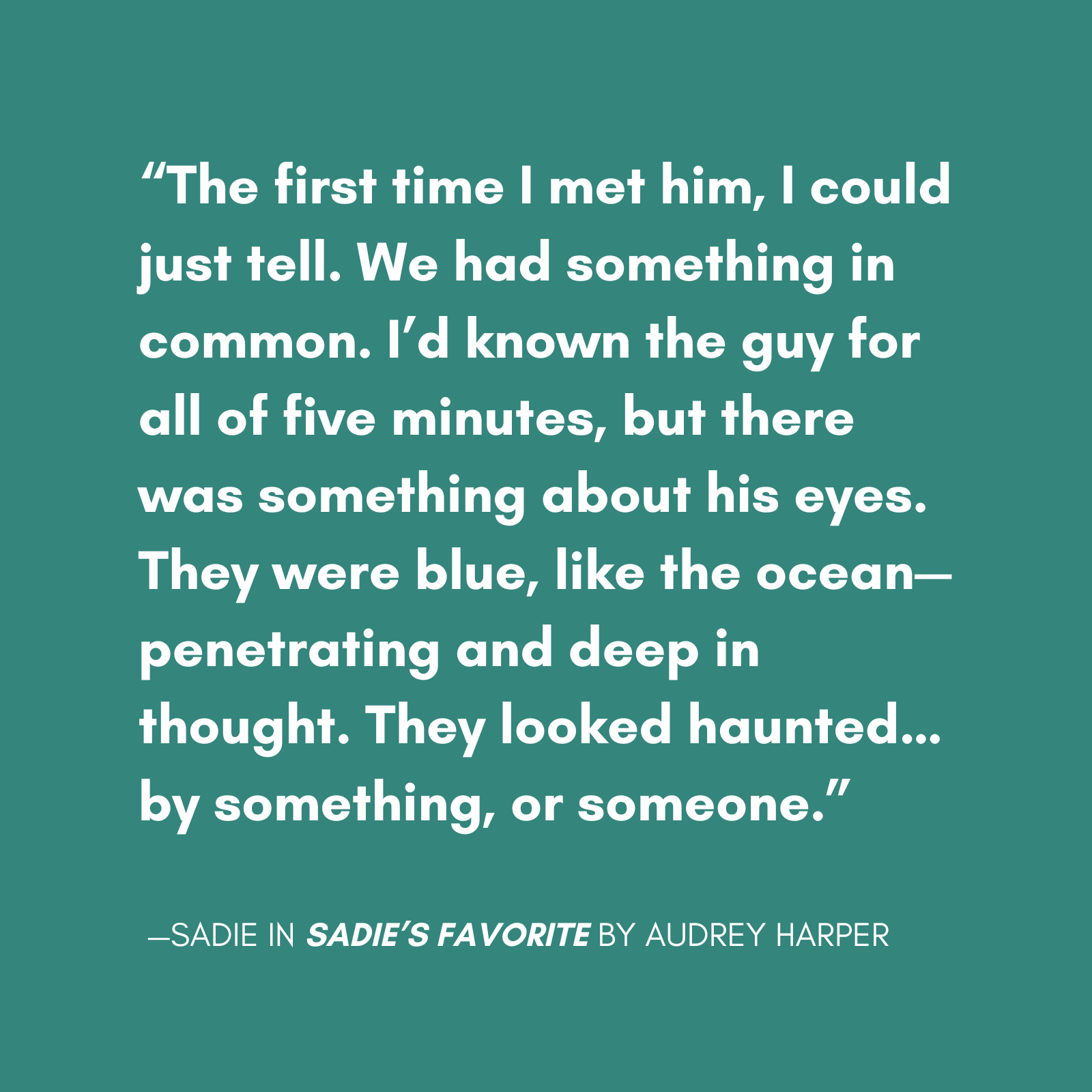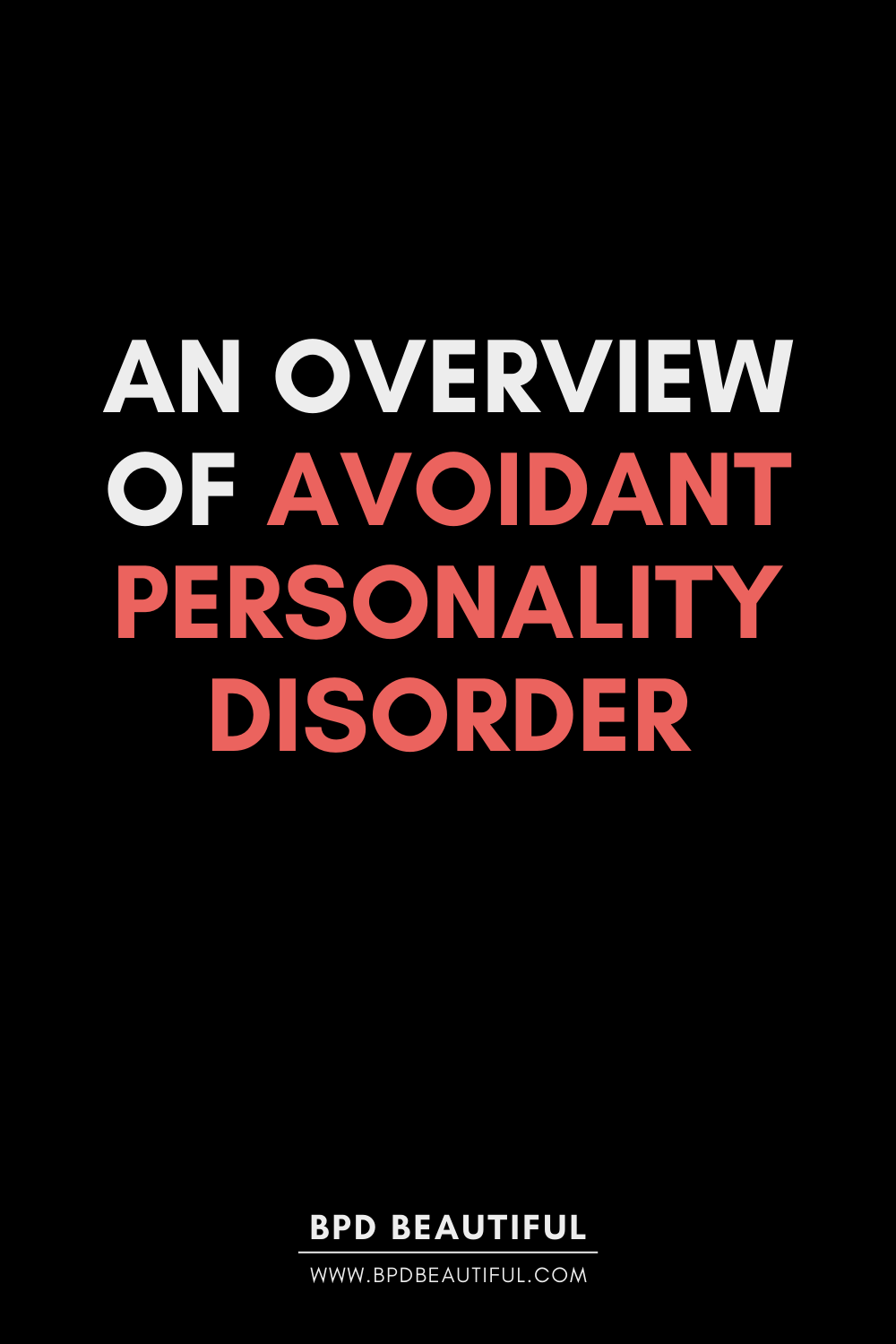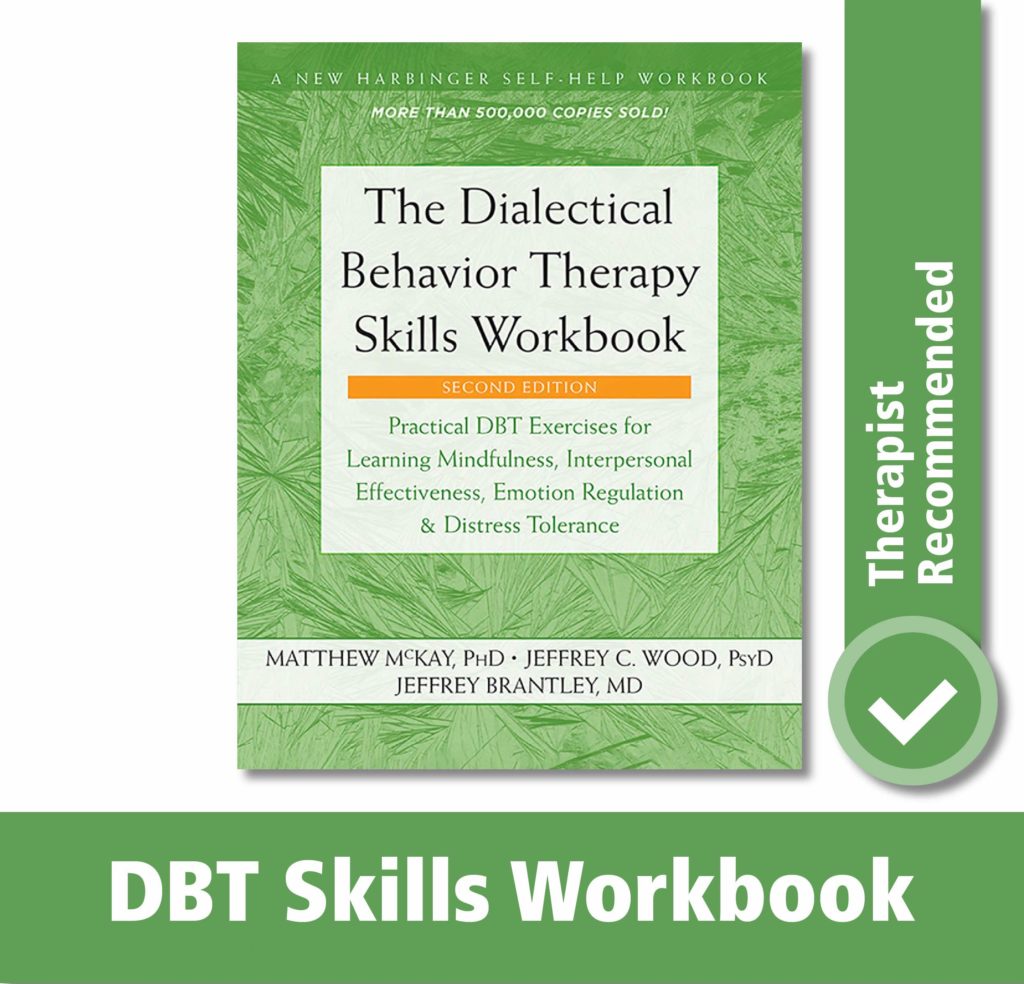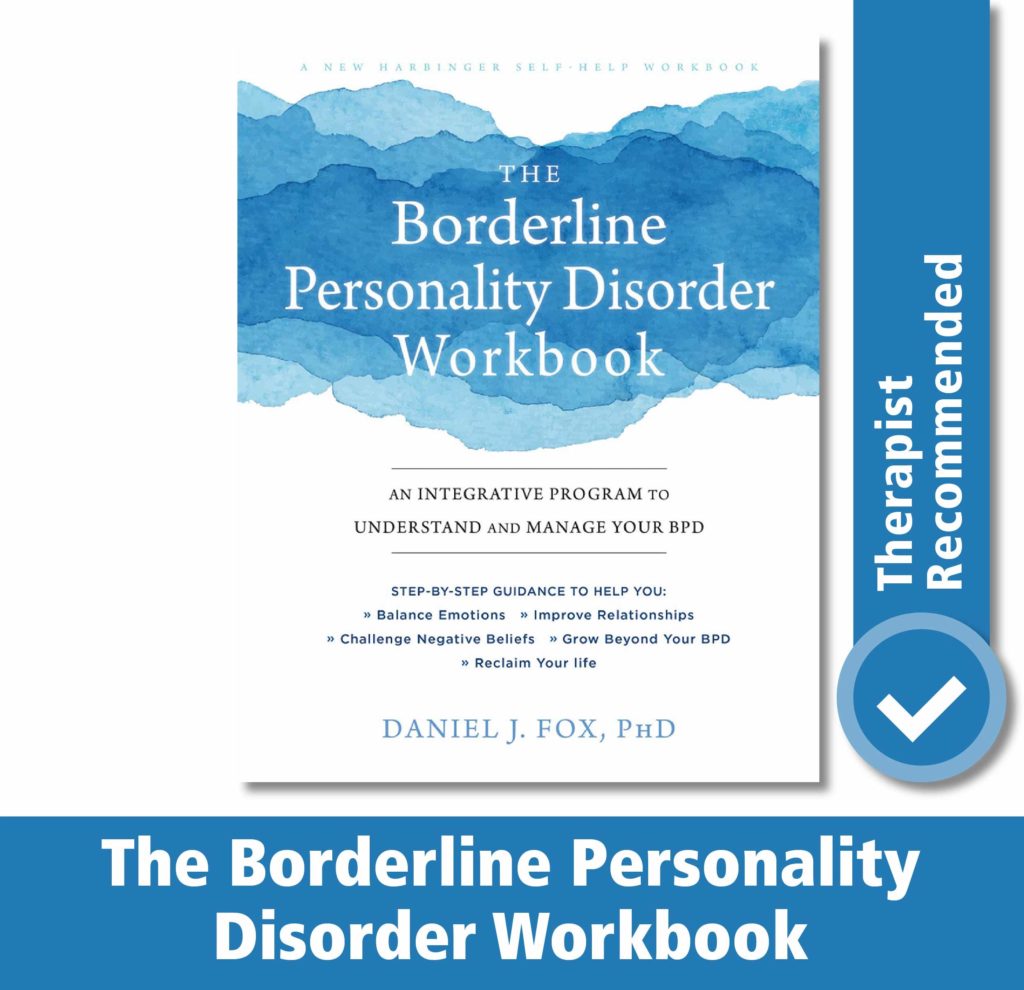If you’re a reader of BPD Beautiful, you most probably either have borderline personality disorder (BPD) or know somebody close to you who has it. Or perhaps you’re just interested in the topic of personality disorders and want to know more. BPD is one of the best-known of these conditions. Much research in the personality disorder field has focused on it. On the other hand, avoidant personality disorder (AvPD) is a lesser-known and studied disorder. However, it frequently co-exists with BPD. Due to this common co-occurrence, it’s great to learn about this related condition.
In this article, I provide an overview of avoidant personality disorder. I also describe how BPD can present when it co-occurs with AvPD (including a look at the “discouraged borderline” and “quiet borderline” concepts). In addition, I share thoughts on the differences between AvPD and social anxiety disorder. And finally, I share other thoughts on personality disorders, discussing how they’re diagnosed and the stigma surrounding them.
If you believe you have BPD, AvPD, or both disorders, please don’t lose hope! There are so many sources of support, insight, and comfort out there. Many people have recovered from BPD and AvPD and have gone on to lead fulfilling and peaceful lives. (Bear in mind that there are lots of acronyms in this article! Hopefully, you’re okay with that.)
How Common are BPD and AvPD?
Like BPD, AvPD is common in general and psychiatric populations. For BPD, percentages in the general public range from around 1.4% at the low end to perhaps 6% at the high end. Most people with the disorder will require mental health care to manage their symptoms and eventually recover. Among the clinical population, estimates of those with BPD range from about 9% to 22% for out-patients, and 15% to 25% for psychiatric in-patients.
What about those with AvPD? According to Lisa Lampe and Gin S. Malhi in their article “Avoidant Personality Disorder: Current Insights,” people with AvPD constitute around 1.5% to 6% of the public. Research indicates that both disorders are equally common. But BPD has much greater public awareness. Furthermore, AvPD has been found to have high rates of co-occurrence with BPD.

As a BetterHelp affiliate, we receive compensation from BetterHelp if you purchase products or services through the links provided.
What Is Avoidant Personality Disorder?
Avoidant personality disorder is a Cluster C personality disorder. It results in significant distress and impairment. In adulthood, those with AvPD are distinguished by their extreme shyness, poor and negative self-image, expectations of and preoccupation with social rejection, sensitivity to criticism and judgement, wariness of others, and restrained and isolative behaviors. Essentially, a person with AvPD displays an enduring and pervasive “pattern of social inhibition, feelings of inadequacy, and hypersensitivity to negative evaluation … present in a variety of contexts.” Like BPD, AvPD often occurs with other personality disorders, especially those in the same cluster.
Regarding the current (2022) DSM criteria for AvPD, they revolve around the following concerns (mostly stemming from fears of rejection):
- Avoiding occupational activities and commitments (such as work or school) that involve a lot of social interaction, due to fears of disapproval, embarrassment, rejection, or mockery.
- Not getting involved with others socially unless they are sure to be accepted.
- Experiencing high levels of shyness, restraint, and inhibition in relationships because they fear disapproval.
- Being hypersensitive to and preoccupied with criticism and rejection in regular social interactions.
- Being socially inhibited and very shy and uncomfortable around new people due to feeling inadequate and inept.
- Perceiving oneself as being unappealing, lesser-than, and inadequate to others.
- Not engaging in any behavior perceived as socially risky.
A person with AvPD experiences cognitions related to inferiority and expectations of rejection and negative judgement. In most scenarios, their fears are unfounded. But if actual or perceived rejection does occur, those with AvPD will probably remember it for a long time. Their observable behavior is, well, avoidant. They take great pains to avoid situations where they anticipate interpersonal disapproval and criticism. The condition is a personality disorder due to the distressing, enduring, and limiting impacts it has on one’s life (and/or on the lives of those around them).

Nevertheless, AvPD symptoms and their severity vary amongst individuals. Some can function well in certain situations or with trusted intimates. But others may struggle in many areas of life. For example, in terms of employment, an avoidant person may have found a small, warm group of colleagues around whom they can relax somewhat. Others may only choose jobs of relative isolation, such as cleaning, late-night work, or remote work. Or they may opt for positions in which they expect minimal social scrutiny or performance-related judgement.
How avoidant individuals experience relationships—both casual and close—also differs. Some with AvPD may have found a life partner or close friend around whom they can be their true selves—“warts and all.” On the other hand, others may adopt socially acceptable masks to endure the public, while hiding their authentic selves from everyone, including those closest to them. Another avoidant person might have found that their social anxiety has disappeared over the years, but their deep-seated social discomfort and negative self-image remain. Some avoidants can establish relations more easily online than in real life, whereas other individuals might not be able to. Symptoms can vary widely.
AVPD and BPD: The Discouraged Borderline and the Quiet Borderline
Decades ago, personality disorder expert Theodore Millon proposed an “avoidant-borderline mixed personality.” This mix made something of a reappearance in Personality Disorders in Modern Life as one of four hypothesized BPD subtypes. The discouraged borderline has features of avoidant, dependent, or depressive PDs. They are described as “pliant, submissive, loyal, humble; feels vulnerable and in constant jeopardy. Feels hopeless, depressed, helpless, and powerless.” In the book, the discouraged borderline type—with avoidant features—is said to have these characteristics:
- Avoids competition
- Attaches to a select few individuals
- Humble and loyal
- Clingy
- Subordinate
- Preoccupied with their security
- Fearful of isolation
- Feels easily depressed and powerless
- Feels that life is an empty, heavy burden
- Merges their identity with that of their significant other
This discouraged subtype may correlate with the concept of a quiet borderline. Unlike more extroverted people with BPD, quiet borderline personalities often internalize their issues and emotions. Their self-destructive tendencies are typically lower-key and less obvious. Anger and mood swings are often internalized, simmering beneath the surface. In many ways, quiet borderlines have experiences like those of avoidants. For instance, their hypersensitivity to interpersonal rejection and negative self-image combine to create shame, self-sabotage, fear of criticism, and isolation. As with discouraged BPD individuals, people with quiet BPD are prone to feeling hopeless, helpless, and depressed.
If you’re seeking insight into an individual’s experience with comorbid BPD and AvPD traits, check out this post on The Mighty. The author mentions symptoms that are most likely familiar to those with both disorders, such as:
- Low self-esteem
- Feelings of inadequacy
- Self-sabotage
- Self-consciousness
- Hypersensitivity to criticism
- Fears of rejection and abandonment
- Preoccupation with rejection
- Discomfort with vulnerability
- Frustration and confusion
Avoidant Personality Disorder vs. Social Anxiety Disorder
As AvPD symptoms overlap with social anxiety disorder (SAD), some believe that the former is simply a severe form of the latter. But it has also been argued that there are experiential differences. For instance, those with SAD may only experience anxiety in certain areas of life—such as when performing socially, feeling the need to impress people, or being around new people. In contrast, an AvPD individual will typically display similar behaviors in virtually every area of life (unless with an intimate who they trust 100%).
Additionally, it could even be said that discomfort increases with familiarity for avoidant people, whereas it typically decreases for those with SAD. For many with AvPD, they probably feel as though they are rotten to their core—damaged and worthless essentially and fundamentally, as a person—and that the possibility of this being discovered increases with familiarity. This would explain why, for some avoidants, their apprehension does not diminish much once they’ve known someone for a long time.
However, this may not necessarily be the case for SAD sufferers. Their anxiety is possibly more likely to decrease once they’ve become comfortable with someone. However, it is possible to have both AvPD and SAD. There are murky areas and symptom overlap. Studies in people with social anxiety disorder have revealed comorbidity percentages of up to over 50% with AvPD.
Another potential differentiating factor could relate to the dimensions discussed in more detail later. Probably every avoidant is an anxious introvert (shy) by temperament and nature. Drawing from anecdotal stories, however, it seems that there are people with SAD who are extroverts or ambiverts. They have never identified as “shy” or inhibited. So, it’s possible to be outgoing and extroverted while also feeling socially uncomfortable. On the other hand, I would be pretty surprised to hear about a true extrovert developing a condition like AvPD.
Finally, the names of the disorders themselves could give hints to the main differences. Social anxiety disorder is centered on the anxiety one feels. Primarily, it is an anxiety disorder. The tension and physical symptoms of anxiety result from fears of social scrutiny. However, as with other anxiety disorders, SAD can be effectively managed with treatments such as exposure therapy and CBT.
Avoidant personality disorder is, first and foremost, a personality disorder. Personality disorders emerge when traits become “so pronounced, rigid, and maladaptive that they impair work and/or interpersonal functioning.” People receive the diagnosis of a personality disorder when they have extremely distorted and maladaptive thinking about themselves. Most people with PDs have negative schemas about themselves, other people, and the world. Usually, these disorders are caused by the combination of a vulnerable temperament, developmental challenges, and various life traumas. (And whether all personality disorders are just separate manifestations of complex PTSD is open to interpretation.)
The Categorical and Dimensional Models of Personality Disorders
For now, the DSM uses seven AvPD criteria in a categorical model. And a person needs to meet four or more criteria. (It’s a fairly arbitrary number!) Some researchers believe that a dimensional model may be better suited to identifying possible personality issues. The article I mentioned earlier states that “dimensional differences on a relatively small number of measurable domains or specific traits can account for all the currently described PDs, for example, the five-factor model.”
A categorical model (such as the DSM one) is more quantitative, with a person needing to tick off a certain number of criteria. A dimensional model would be more qualitative, looking at degrees of symptom severity across a range of traits. For example, if a person scores high on the Big 5 dimension of neuroticism, this may put them at higher risk for basically every personality disorder. (This trait has even been deemed “a fundamental domain of personality with enormous public health implications.”)
And if the same individual with a high neuroticism score also scores low on extroversion, they may be more likely to have or develop AvPD or quiet BPD. The etiology of PDs is complex, but it’s an interesting concept to ponder.
The Highly Stigmatized Nature of Personality Disorders
Within the diagnostic criteria for “personality disorders,” there is much overlap. If you have one, you will probably either have traits of others or meet the criteria for another. It’s helpful to remember that mental health conditions—including personality-related ones—can manifest quite differently among individuals. Despite sharing a diagnosis with others, each person is unique. They have their unique histories, struggles, and journeys to recovery.

However, personality disorders are still highly stigmatized. Stigma has been described by sociologists as “social rejection resulting from negatively perceived characteristics [which] leads to the ‘spoiled identity’ of the stigmatized individual.” For instance, people with specific mental illnesses may be mistrusted, excluded, or judged as dangerous. This ostracism arises, in part, due to the term “personality disorder,” negative media portrayals, and a lack of awareness, education, and compassion.
While it is true that certain individuals diagnosed with antisocial or narcissistic personality disorders are, indeed, dangerous, we shouldn’t immediately assume the worst about every person with a “personality disorder” diagnosis. Many of those affected—such as with avoidant PD, dependent PD, and most people with BPD, etc.—tend to do more harm to themselves than to others.
Remember to holistically consider the individual. People are far more complex than convenient labels. Primarily, the clinical diagnoses were created for easier communication between health professionals and those with lived experience. They offer a quick means to convey the likely issues that a person may experience. They’re also helpful for treatment planning.
So, if you’ve received a “personality disorder” diagnosis, or strongly suspect you have one (or more) of these conditions, remember that you are more than just a diagnosis. Finding an understanding, kind, and compassionate therapist or friend who you trust (and who is trauma-informed) can go a long way in helping you.



Sadie’s Favorite: A Novel + Original Soundtrack is a character-driven story about BPD recovery, trauma bonds and breaking away from abuse.
BPD Resources
BPD in Fiction: Sadie’s Favorite is a Novel + Original Soundtrack, that touches on BPD, favorite person (FP) relationships, healing after abuse, parenting and more. Written by Sarah Rose, creator of BPD Beautiful. Soundtrack performed by Them vs. Her.
Get 20% off your first month of BetterHelp. Get matched with a licensed therapist within 48 hours. Subscriptions as low as $65/week, billed every 4 weeks. Cancel anytime.
Manage your BPD symptoms with a printable workbook.
See our recommended list of books about BPD.
Start a Discussion
What are your thoughts on avoidant personality disorder (AvPD) and BPD? Share your experience in the comments! We love hearing from like minded individuals.
Pin This Post
Liked this post? Please help support BPD Beautiful and spread avoidant personality disorder and BPD awareness by pinning it on Pinterest.






